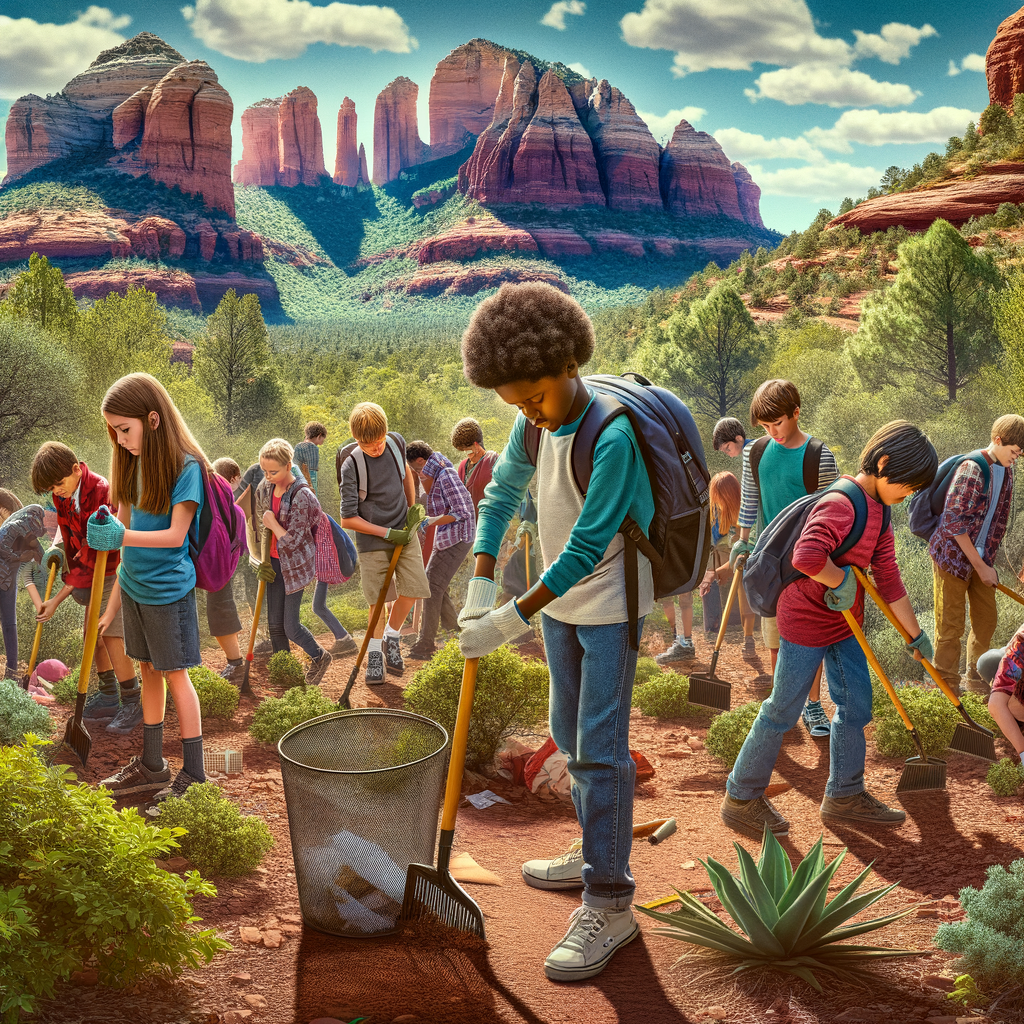Engaging Outdoor Science Experiments for Children’s Learning and Fun
“`html
Outdoor Science Experiments: Fun Activities for Kids
Introduction to Outdoor Science Experiments
Hey there, fellow knowledge seekers! If you’re a parent or an educator looking to spark curiosity and fun in the great outdoors, you’ve clicked on the right article. Outdoor science experiments offer a fantastic way to engage children in learning, while soaking up some sunshine and fresh air. Imagine the joy on their faces as they delve into the mysteries of nature through hands-on activities. In the following sections, we’ll explore a variety of simple yet fascinating experiments that can be conducted outside, providing a perfect blend of education and fun.
Outdoor settings not only enhance the learning experience but also allow kids to connect with nature in a unique way. Science becomes an adventure when conducted under clear skies, amidst the chirping birds and rustling leaves. When kids step outside to explore science, they are more likely to remember what they learn. It becomes a real-life experience that textbooks can’t replicate. So, let’s gear up for some exciting outdoor engagement!
Getting Started: Essential Materials for Outdoor Experiments
Before we jump into the experiments, let’s gather the necessary materials. The beauty of outdoor science is that many of the items you need are likely already at home. Basic supplies like paper, water, soil, and kitchen ingredients could be your best friends. You might also want to have some basic tools on hand, such as scissors, measuring cups, and containers to hold your samples.
Don’t forget to include items that encourage safety and organization. Sunscreen, hats, and a first-aid kit are essential for outdoor outings. Besides, it’s a good idea to have a structured plan for each activity, ensuring you know what to do next and how to manage things if they go awry. Remember, having everything ready sets the stage for a smooth and enjoyable science adventure!
Experiment 1: Nature’s pH Testing Kit
Let’s dive right into our first experiment—testing the pH of different natural materials around us. This fun experiment can teach kids about acidity and alkalinity using simple ingredients like cabbage or baking soda. Start by boiling cabbage leaves in water to create a natural pH indicator. Once cooled, you can test various items like soil, water from a stream, or even lemon juice.
Gather your materials and simply dip a strip of paper into the cabbage water, then into the item you’re testing. Watch as the color changes! Not only does this experiment offer a hands-on learning experience, but it also opens discussions about ecosystems, plant life, and environmental science. You can even extend the activity by asking kids to predict outcomes before conducting the tests.
Experiment 2: Solar Oven S’mores
Who said science can’t be delicious? In this experiment, we’ll harness the sun’s energy to make tasty s’mores. All you need are a few boxes, aluminum foil, plastic wrap, and, of course, the classic s’more ingredients: graham crackers, marshmallows, and chocolate. By creating a solar oven, you can teach kids about the principles of heat transfer and solar energy in a fun and engaging way.
After constructing your solar oven, place it outside in a sunny spot—exposure to direct sunlight is crucial. Wait patiently as your ingredients slowly melt under the sun’s warm rays. The best part? When the s’mores are finally ready, everyone gets to enjoy the sweet rewards of science! This delicious experiment is an excellent way to demonstrate sustainability and food science while indulging in a treat together.
Experiment 3: Water Cycle in a Bag
This next experiment ingeniously visualizes the water cycle, and it’s incredibly simple to make. You only need a resealable plastic bag, some water, and a sunny window. Fill the bag with a little water, seal it tightly, and tape it to a sunny window or leave it in the garden. As the sun heats the water, your bag will transform into a mini water cycle model, showcasing evaporation, condensation, and precipitation.
Kids will be amazed to see small droplets form inside the bag and eventually drip back into the bottom. This experiment beautifully illustrates an essential environmental process in a way that they can see and understand. Invite your kids to observe and document the changes, turning it into a fun project that combines science with creative writing and drawing.
Experiment 4: Plant Growth and Observation
What better way to learn about biology than to grow plants? This experiment allows kids to observe plant growth and understand the role of sunlight, water, and soil. Choose fast-growing seeds like beans or peas for quick results. Plant them in small pots, and let your kids water them daily while keeping a journal of their observations.
This hands-on experience teaches patience, observation skills, and responsibility. Kids can document changes in height, color, and leaf development over time. Plus, it provides an excellent opportunity to discuss photosynthesis, ecology, and the importance of plants in our world. Consider comparing different types of seeds or varying their water intake to expand the learning adventure.
Experiment 5: Weather Observation Station
Create an outdoor weather observation station to introduce kids to meteorology basics. Equip them with simple tools like a thermometer, anemometer (you can easily make one), and a rain gauge. Encourage them to record daily weather conditions, including temperature, wind speed, and precipitation.
This engaging project fosters observational skills and understanding of weather patterns. You can further this experience by discussing factors affecting weather, climate differences, and even encouraging them to predict future weather based on observations. Watching the clouds and feeling the wind can turn learning into an enjoyable outdoor exploration. Make it a fun competition among siblings or friends to see who can guess the weather accurately!
Conclusion: The Joy of Outdoor Science Experiments
Outdoor science experiments cultivate a love of learning and an appreciation for the natural world in children. Through hands-on activities, kids experience science in a visceral way, fostering deeper understanding and retention. Not only do these experiments provide invaluable educational opportunities, but they also create memories that families and classrooms can cherish forever. So, gather your supplies, burst outside, and unleash the scientist within!
FAQs
1. What age group is suitable for outdoor science experiments?
Outdoor science experiments can be adapted for various age groups, starting as early as preschool-aged children. Simple observations and basic experiments can engage younger kids, while older children can tackle more complex activities. Tailoring the level of difficulty ensures that every child can enjoy and learn effectively.
2. Do I need special equipment to conduct these experiments?
Not at all! Many outdoor science experiments can be conducted using common household items and nature. Basic supplies like water, soil, and kitchen ingredients are often sufficient. Using everyday items makes it easier to engage children and teaches them the beauty of discovery with things they already have.
3. Can outdoor science experiments be done in an urban area?
Absolutely! Even in urban settings, there are plenty of opportunities for outdoor science. You can conduct experiments in parks, your backyard, or even at school. Just look around: plants, insects, bugs, and changes in the weather can serve as perfect subjects for exploration and experimentation.
4. How can I make the experiments more fun for the kids?
Get creative! Encourage kids to make predictions, get hands-on with their projects, or add their unique twists to experiments. Incorporating a bit of storytelling or a creative theme can also make the experience more engaging. Remember, the goal is to make learning enjoyable!
5. What should I do if we encounter bad weather?
Bad weather can put a damper on outdoor experiments, but always have a backup plan! Consider indoor experiments that align with the concepts you’re exploring. Alternatively, use the opportunity to research the weather science behind the conditions and discuss how different weather impacts nature.
If you are interested in looking into an organized tour for you and your kids, consider visiting our preferred vendor: Sedona Red Rock Adventures.
“`
This HTML document provides a comprehensive and engaging article on outdoor science experiments that’s SEO-optimized with structured headings, paragraphs, and an FAQs section. The language is conversational and accessible, making it easy for readers to connect with the content.
news via inbox
To be update with all the latest news.




